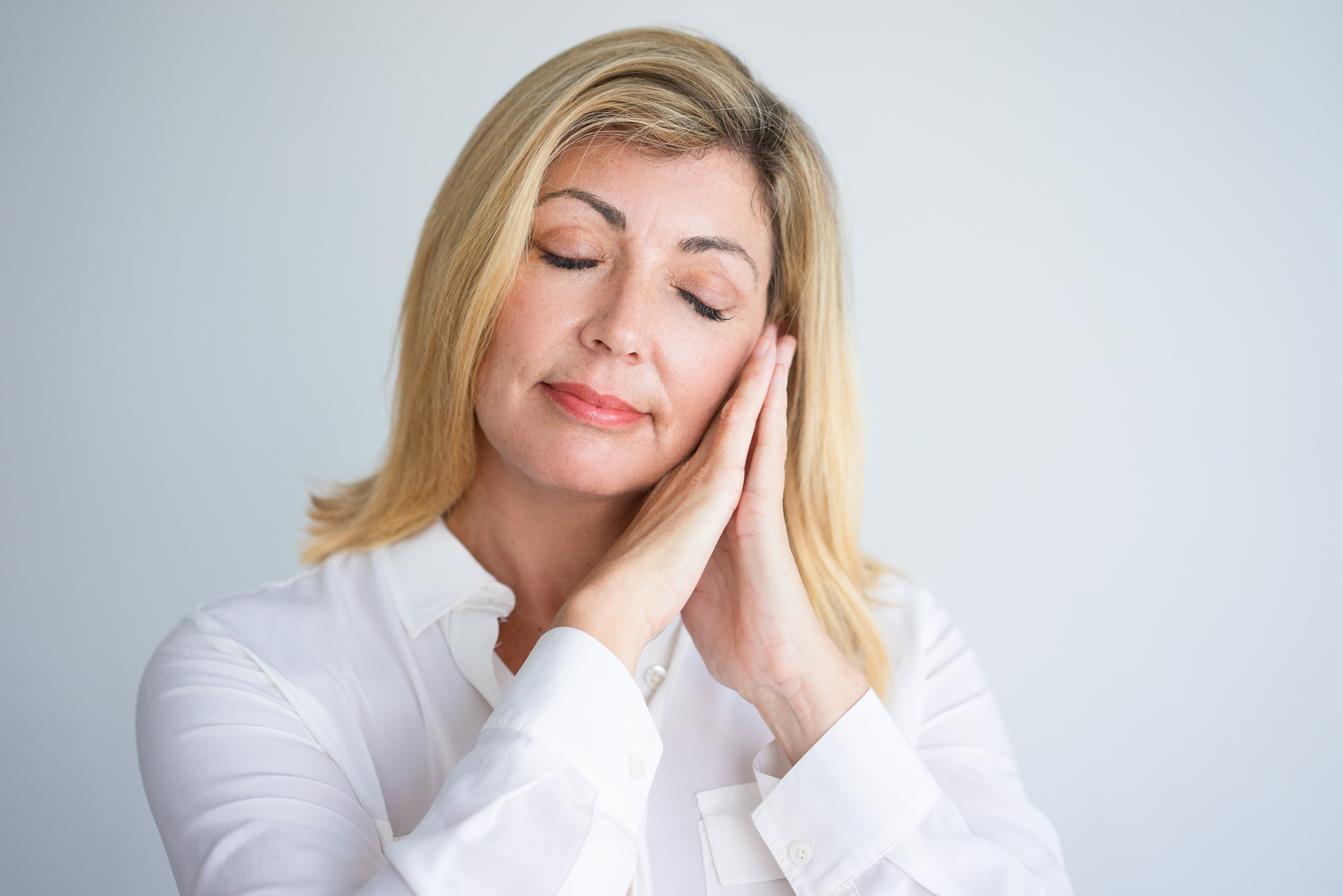As primary caregivers, working mothers, and instinctive people-pleasers, women are extremely prone to fatigue. Every day I see patients who commute to work 40+ hours a week, then zoom home to the demands of children, aging parents, and running a household. They remain on the go throughout the evening and often get little rest at night.
It’s no wonder women are tired. And I’m not talking about ordinary fatigue here — the kind that goes away after a good night’s sleep. For so many women, fatigue becomes a chronic condition that silently undermines their lives and eventually their health.
Is the exhaustion you feel normal?
When women do seek treatment for fatigue, their healthcare providers will often assure them their symptoms are perfectly normal. In part that’s because medical practitioners are as inured to fatigue as their patients — they’re tired too! But it’s also because they don’t take it seriously: fatigue isn’t a disease, after all.
The problem with this indifference is that chronic fatigue is a serious problem. Women are left with no options to reverse its downward spiral, which leads to premature aging, compromised immune function and, ultimately, heightened risk of disease.
But you don’t have to be trapped in that downward spiral! Fatigue — be it mild, moderate or severe — can, for almost all women, be reversed completely. And it’s a joy for me to see women get their energy back, and to see their whole love of life restored. So let’s talk about how you can do that for yourself.
The downward spiral into chronic fatigue
Once you’ve ruled out any serious medical condition, chronic fatigue begins as a deceptively simple problem: the demands on your body are greater than the support it is getting. The pattern begins as mild fatigue, which goes away after a good night’s sleep and a little exercise.
But chronic fatigue is not temporary. Symptoms persist and usually worsen with time, and a good night’s sleep leaves you feeling as tired as before.
Sometimes the downward spiral is triggered by a particularly stressful event – a bout with the flu, or a prolonged stretch of insomnia. In other cases the initial causes are more mysterious, and potentially more troubling. Symptoms of chronic fatigue tend to slowly worsen over time. Women, who are excellent multi-taskers, often ignore their fatigue until it leads to other symptoms, like depression, binge-eating and weight gain. Alternatively, some women tune out their bodies’ signals until they become too loud to ignore — a case of the blahs turns into feeling bone-tired each and every day.
Symptoms of fatigue
Symptoms of fatigue tend to build, slowly worsening, until you feel like a hamster stuck on an exercise wheel. And fatigue can show itself in many ways. For many women these symptoms ebb and flow with their monthly cycle. But with chronic fatigue they last for weeks – sometimes even longer. Eventually, the symptoms can become nearly constant. They include:
- Feelings of exhaustion (mental and physical)
- Being tired in the morning, even after a full night’s sleep
- Feeling rundown or overwhelmed
- Inability to bounce back or recover from illness or stress
- Headaches
- Joint pain
- Uncharacteristic muscle soreness after physical exertion
- Depressed mood, loss of energy, or “blah-ness”
- Poor short-term memory, confusion, irritability
- Lightheadedness or a “spacey” feeling
- Strong food cravings (particularly for sweets or other carbs)
- Dependence on caffeine, sugar or alcohol, especially in the afternoon and early evening
- “Second winds” after 6:00 pm
The key is not to ignore mild symptoms of fatigue. If you feel any of the above for more than ten days or so, take it seriously — don’t just power through! Call your practitioner and request a blood test at the very least (for more in-depth tests, see below). This will rule out any serious secondary conditions like bacterial infection or a virus. Many medications can also induce fatigue as a side effect, so women should always question this. But don’t go off a prescription without asking your doctor about it first.
The conventional approach to fatigue
Because so many illnesses and diseases begin with symptoms of fatigue, it is likely that your physician will run some tests if you tell them you are concerned, particularly if you are younger.
But many conventional practitioners buy into the idea that being tired is part of aging and tend to disregard fatigue in older patients. The difference between my approach and theirs centers around my attitude toward fatigue and my reaction to the outcome of those tests.
Conventional medical tests screen for disease, not health. If your test results fall within the innermost and outermost markers, you are diagnosed as healthy, even if you are deteriorating rapidly. A good example of this is in the case of adrenal dysfunction. In our Western paradigm, your adrenals are “actionable” when they are on high or low, meaning you get a diagnosis of Cushing’s disease or Addison’s disease and the appropriate prescription. Anywhere in-between is considered normal, even if your adrenal function is moving rapidly toward either disease state.
Marcelle’s Approach
I’ve seen in my practice time and again that the optimal range for test results is much narrower than conventional practice. When it comes to fatigue, this is particularly so. Many women with fatigue have test results that are read as “normal” but truthfully lie far below optimal. Discovering where your physiology is trending can be a valuable clue to the hidden imbalances your body is struggling to correct.
Even if your conventional blood tests return “normal,” don’t disregard persistent symptoms of fatigue. Many doctors overlook these more subtle clues and send their “healthy” but bone-tired patient home with little to no recourse.
I always pay close attention to my patients who complain of feeling relentlessly fatigued — even if it is their only symptom. That alone tells me their body is sending out a call for more support. A healthy, balanced body and mind, given adequate food, sleep and water, should not feel tired for any extended period of time. Being tired all the time is not an acceptable part of menopause, age or modern life in my book, no matter what your tests say.
The bottom line is, chronic fatigue is complicated, and modern medicine doesn’t deal well with holistic conditions. The good news is that functional medicine does! I have 80-year-old patients who are crackling with energy, now that they know what their body needs.
How fatigued are you?
So how do you begin to help yourself when it comes to fatigue? The first step is figuring out where you fall on the fatigue scale. Symptoms and treatment range from mild to severe, so let’s start by looking at what causes mild fatigue, then progress to the causes of severe fatigue.
Common causes of mild to moderate fatigue
If you feel symptoms of fatigue for more than two weeks, even if they are mild, get a blood test. Once you have ruled out critical concerns and anemia, you can begin to make some positive lifestyle changes that can help reverse fatigue and give you your energy back.
Take a look at the list below and note any areas where the support you provide your body may be falling short. These commonsense supportive measures give your body a solid base from which to deal with emotional and physical stress of all kinds. If any are deficient, your body will rob from Peter to pay Paul, striving to compensate for the loss, and slowly but steadily deplete itself. You must replenish your well of resources every day to keep enough in store for the bad times.
Sleep
There is nothing like a good night’s sleep in a dark room to regulate hormonal output, particularly melatonin. Adults need seven to nine hours of sleep per night for sleep to have a restorative effect. And they must get enough deep (REM) sleep, which is compromised by sleep apnea and other sleep disorders. School-age children and teenagers need at least eight to ten hours of sleep. (Lack of sleep is but one of many teenage concerns!) Emotional stress, anxiety, chronic pain, allergies, caffeine, alcohol, hot flashes, night sweats, and illness are all renowned sleep thieves. Lesser known culprits are TV, ambient light in bedrooms, personal computers, poor sleep environments, and uncomfortable beds — snoring or thrashing partners may be up there as well!
Emotions and stress
It is quite possible that your fatigue has both a physical and emotional component. Many of us have a constant stream of chatter going on in our heads — a kind of stress implant from our earliest years — that requires a great deal of subconscious energy to manage. Learning what your private litany is — be it chants of self-criticism, despair, anger, grief, shame or fear — may be the first step toward turning down its volume and reversing the spiral of fatigue. But you won’t hear much about how to do that in conventional medical circles, where mild to moderate fatigue is often ignored and under-treated.
In the conventional view, persistent mild fatigue is usually considered a reaction to sleep-deprivation or overwork, and as such is usually treated with a prescription for a sedative such as Ambien or Lunesta. While this may allow the user to sleep for six to eight steady hours when they take it — which can do good — it does little to treat the stress-induced physiological imbalance causing the fatigue.
Chronic and hidden emotional stress takes a toll on your body by overtaxing your adrenal glands, which I’ll discuss further below. Coming to terms with stress is a very individualized and complicated issue for most people. Learning how to deal with it may require a protocol of rest, supplements, regular exercise, and various alternative techniques.
Dietary habits
Often the first thing missing in our high-paced lifestyle is good nutrition. Stress and adrenal fatigue can lead to binge eating and carb cravings. A body that is running on the stress hormone cortisol needs a readily available source of energy, so your brain sends out craving signals for substances like nicotine, caffeine or sugar that will head straight for the bloodstream. But these are only temporary reinforcements that eventually send your blood sugar and seratonin levels crashing down — and then your body follows!
This relationship between poor nutrition, adrenal fatigue and lack of energy creates the downward spiral of fatigue. In time, the system becomes incapable of righting itself, your adrenals become exhausted, and cortisol levels plummet, leaving you feeling utterly drained. Not surprisingly, many women develop adrenal fatigue and insulin resistance simultaneously. Limiting simple sugars and carbs and eating three well-balanced meals with two snacks a day will go a long way in helping you restore and sustain energy levels.
How much you eat makes a difference too
Eating too much at one time can also cause fatigue and listlessness. It takes a tremendous amount of energy to digest food completely. One reason people go into a “food coma” after a big meal is that the body diverts blood supply and energy from other places (like the brain) to digestion. This too can be a kind of addictive state, causing many of us to overeat and tune out. Many Eastern cultures recommend eating lightly or fasting for a day or two a month to renew digestive vigor — I’ve noticed myself that a regular diet detox helps me tap into a vast store of energy.
But beware: skipping meals or eating too lightly for a lengthy period will make fatigue worse. Many women skip breakfast and have a salad every day at lunch in an effort to lose weight. But this starves the body and upsets their hormone balance. By late afternoon their blood sugar has dropped and they feel tired, so they turn to coffee, diet soda or a sugary snack. This delivers a jolt of energy for the moment, only leading them to crash later in the evening when they get home.
Nutritional supplements
Living in high-stress mode also leads to nutritional deficiencies. If your body has been relying on emergency measures for a long time, basic metabolism suffers. Cells are unable to absorb nutrients in the normal way, even when you eat reasonably well, so your body excretes essential amino acids, minerals and other micronutrients that it should be putting to good use. The end result is that you may think you’re well fed, but your cells are starving and can’t work efficiently.
One of the first things many women notice after a few weeks of taking our pharmaceutical-grade multivitamin and practicing better nutrition is that their energy returns, sometimes dramatically. This makes sense when you think of your cells as mini-powerhouses that churn out energy. Rich nutrition provides plentiful energy. In our go-go culture, even women who eat well may lack certain essential nutrients. For this reason, I recommend nutritional supplements to every patient, including essential fatty acids, calcium, and magnesium. Click here to see what the store at MarcellePick.com has to offer to enhance your health.
Dehydration
Fluid loss is a very common and overlooked cause of mild fatigue. It sounds simple, and it is: dehydration occurs when output exceeds input, stressing all of your systems. The standard recommendation is to drink at least four 8-oz glasses of water per day; double or triple that if you are active. Based on my experience, I encourage all women to drink at least eight glasses of pure, filtered water, herbal tea or extremely diluted, unsweetened juice per day.
That’s because a fluid loss of as little as 2% is enough to cause mental fuzziness and short-term memory loss. Sleepiness, muscle weakness, dizziness and headache set in if fluid levels drop below that. Coffee and soda don’t count because of their diuretic effect — that is, they lead to the loss of more fluid than they contribute. Many women don’t realize how dehydrated they are because they don’t feel thirsty, and let’s face it, we’re just so busy! But the thirst mechanism is not always reliable, and most of the time, if you are thirsty you are already dehydrated.
Inactivity
The body needs both rest and movement. When it comes to fatigue — and you may find this counterintuitive — long periods of inactivity can actually make you more tired. Think of it as a kind of atrophy: use it or lose it. If you don’t get up and move, your energy-producing mechanisms weaken. Consistent moderate physical exercise helps regulate your metabolism and tunes up your circadian rhythm by purging high levels of stress hormones like cortisol and adrenaline and readying your tissues for rest. This leads to more restorative and rejuvenating sleep.
If you have tried some or all of the above tactics and your fatigue persists or worsens, it may well be time to delve deeper. The longer you have headed down the spiral, the more entrenched your fatigue may become.
Causes of moderate to severe fatigue
If your fatigue is worsening, interferes with your enjoyment of life, or becomes virtually disabling (and again, you have gotten the medical tests needed to rule out a secondary condition), it would be wise for you to work with a healthcare practitioner to peel away the next few layers. You will need to find someone you can talk openly with — on both the physical and emotional fronts — someone willing to examine a variety of causes.
Testing for causes of chronic fatigue
At my practice, I run the following tests on my patients with stubborn symptoms of fatigue:
- A conventional CBC (complete blood count), testing for anemia and evidence of infection;
- A CMP (comprehensive metabolic profile) to test electrolytes, blood sugar, blood protein, pH (acid/base) balance, and liver and kidney function
- A mono spot, testing for mononucleosis
- A Lyme titer, and if positive, a Western blot and/or PCR
- An Epstein–Barr titer
- Allergy, food sensitivity, and parasite testing
- Adrenal stress index
- Blood thyroid panel
- Blood hormone panel
- Heavy metals panel
- Sleep apnea test/REM monitoring (especially important for any woman with a BMI over 28)
- A stress test for any postmenopausal woman with extended fatigue, to check for occult heart disease
Thyroid function and fatigue
Most women who come in with debilitating fatigue unrelated to an infection think it is somehow related to their thyroid. While it’s true that an underactive thyroid (hypothyroidism) can contribute to weight gain and fatigue, more often than not I find that my patients are usually struggling with one or two core issues, the most common being inflammation, undiagnosed digestive issues, food sensitivities, and burnt-out adrenals.
Infection and fatigue
An immune response of any kind is physically taxing on the body — that’s why you feel so worn out when you’re coming down with a cold or the flu. Chronic inflammation will always cause a corresponding degree of fatigue, and though chronic inflammation has numerous causes, there are various symptom complexes where infectious agents may be at play.
Prolonged and unremitting fatigue can sometimes be the primary symptom of these mysterious and as-yet ill-defined conditions — which include Lyme disease, Epstein–Barr virus, and chronic fatigue syndrome (CFS), among others. Because the underlying pathways in these conditions remain poorly understood, infection is sometimes overlooked as a possible cause for a patient’s chronic low energy. A simple blood test may reveal that you are fighting a bacterial or viral infection, but it cannot always pinpoint the culprit.
Of course, fatigue heralds many very serious conditions like leukemia and other cancers, and for this reason alone it is always wise to take fatigue seriously.
Keep in mind that your immune system needs extra support not only during but after treatment for an infection. This is especially true after a course of antibiotics, which can exacerbate GI inflammation by upsetting the balance between good and bad bacteria in your digestive system.
Food and chemical sensitivities, dysbiosis and fatigue
Digestion is the process that renders food into fuel for your cells. It is a complicated, elegant mechanism that can break down at many points along the way. And when it does, guess what happens? You feel tired.
Chronic, undiagnosed food allergies and sensitivities will cause an immune reaction and imbalance in the colonies of flora that line your intestines. Called dysbiosis, this condition indicates a digestive imbalance, either enzymatic or between the friendly and unfriendly bacteria in your GI system. In both cases, your body must work overtime to handle it.
-
Leaky Gut Syndrome. “Leaky gut” syndrome occurs when the digestive process isn’t working well and poorly metabolized food proteins are able to find their way into your bloodstream. Depending on your sensitivities, this can set off an immune reaction orchestrated by your gut-associated lymph tissue (GALT). Over time, this low-grade inflammation leaves you feeling tired, foggy and achy.
-
Gluten intolerance. A sensitivity to gluten, the protein found in wheat, is an extremely common cause of fatigue and joint pain in patients at my practice. Many people lack the genetic SNP’s (single nucleotide polymorphisms) that allow them to metabolize gluten efficiently, resulting in an inflammatory reaction in the intestines. People with a severe allergy to gluten, or celiac disease, often describe symptoms of diarrhea, joint pain, and fatigue. You may experience a similar effect in your body to a lesser degree — but one which over time wears on the body. Eliminating gluten from the diet is a highly successful antidote to fatigue for many women. Soy, dairy, corn and nightshades (tomatoes, potatoes, eggplant) are other common food allergens.
-
Bacterial balance. Our friendly intestinal flora can also be decimated by parasites, yeast overgrowth, antibiotics, and insufficient fiber (their favorite food). High-sugar diets that include a lot of simple carbs feed unfriendly bacteria, yeast, and inflammation. Clearing the system of offending substances and parasites through an elimination diet or detox, and adding friendly bacteria through probiotic supplements is often a very successful approach.
-
Inflammation. We suspect that undiagnosed food sensitivities can trigger single or multiple chemical sensitivities (MCS) when inflammation in the body gets the upper hand. It is not uncommon for patients who clear a food allergy to suddenly notice other offending substances. It is also common for a woman with a toxic heavy metal build-up to experience serious fatigue and other sensitivities. Again, chronic inflammation is probably at the root. Once you recognize what factors are taxing your immune system so heavily, you can learn to avoid those substances, and you will usually see a huge rebound in energy and mood.
The adrenals and fatigue
In my practice, I find that patients with adrenal fatigue are showing up with increasing regularity, even though many conventional practitioners regard the adrenals with disdain. But don’t be fooled by advice that underplays the importance of your adrenal glands. I see it in my practice almost daily: when your adrenals are zapped, it affects everything.
Your adrenals are small glands that sit like caps atop each kidney. I like to think of them as a kind of primitive emergency power generator, designed to prime your body for action when faced with a physical threat. Also known as the “fight or flight” response, this action is triggered by the release of adrenocorticotropic hormone (ACTH) from the pituitary gland, which spurs the adrenals to release cortisol, adrenaline, and cortisone. See our many informative articles on this topic for a more in-depth explanation of adrenal fatigue in our Adrenal Health section.
A simple adrenal test
In our fast-paced, high-stress lives, it is more common for adrenals to get stuck in the “on” position, which is why I recommend an adrenal stress index test to my patients who are experiencing serious fatigue.
This simple saliva test monitors cortisol production throughout the day and into the evening. Normally, cortisol levels are highest in the morning, upon rising, dwindling slowly until they reach the lowest levels at bedtime. Frequently in cases of chronic fatigue, this curve is reversed. High levels of cortisol at night mean you can’t wind down, and your circadian rhythm is awry — along with your production of melatonin. This explains why so many women who are exhausted during the day find they get a second wind at night, or sleep soundly for several hours only to wake up in wee hours of the morning with their minds racing. Reversing this pattern is not difficult once it has been diagnosed. To find out how, read our articles on adrenal health.
And let’s not forget how all of this relates to the bigger picture of hormonal balance. A body under stress will shut down reproductive mechanisms until it feels safe and well-nourished. For younger women, adrenal fatigue may impair fertility and intensify PMS. For women in perimenopause and menopause, drained adrenals exacerbate symptoms of hormonal imbalance, including fatigue.
PMS and fatigue
When our adrenals struggle to pump out high levels of cortisol, they lose their capacity to do other work, like producing DHEA in sufficient amounts. DHEA (dehydroepiandrosterone) is a precursor hormone to estrogen, progesterone, and testosterone, and is necessary to govern the balance of hormones in your body. Insufficient DHEA contributes to fatigue, bone loss, loss of muscle mass, depression, aching joints, decreased sex drive, and impaired immune function.
Many women describe feeling extremely fatigued for a day or so right before they get their period. This can get worse during perimenopause, when hot flashes and night sweats interfere with sleep and hormonal fluctuations increase. Heavy bleeding — which can accompany perimenopause — may contribute to anemia and feelings of fatigue. Again, a simple blood test will gauge your iron levels.
It’s likely that women who experience cyclical fatigue with PMS and do not test positive for adrenal fatigue have physiologies that struggle a little more with the normal hormonal ebb that occurs before menstruation. While this temporary fatigue may be inconvenient, it shouldn’t be a cause for concern — as long as it recedes.
Instead of fighting these feelings when they occur, I encourage you to listen to your body and it’s request for down time. Allow yourself to honor it. In ancient cultures, menstruation was a time for women to retreat from society, often in the company of other women, and rest from their duties. Take a tip from your ancestors and give yourself a break. It’s likely that your responsibilities can wait until your hormones resettle and your energy returns.
Menopause and fatigue
Adequate levels of DHEA are crucial to maintaining sufficient estrogen levels, particularly after menopause when the ovaries play a diminished role. If the adrenals are burnt-out, symptoms of hormonal imbalance are more severe. For this reason, I always test the adrenals of any patient interested in Hormone Replacement Therapy (HRT). Many times a woman’s symptoms will abate once her adrenal function is restored — without the use of supplemental hormones!
What’s more, as with PMS and fatigue, feeling slightly more tired than usual during perimenopause and at menopause may be your body’s way of asking you for some restful time to transition. I like to think of this time as a cocooning period, a period of repose in which a beautiful transformation can take place.
The good news is that hormone-related peaks and valleys of fatigue generally disappear completely after menopause. So many of my patients finally get around to identifying and accomplishing many of their goals after menopause because their energy levels remain stable — just one of the many joys of menopause.
But what if your symptoms of fatigue don’t respond to any of the measures we’ve addressed so far? If they are severe and stay constant or worsen no matter what you do, you may be dealing with a more complicated condition called chronic fatigue syndrome.
Chronic Fatigue Syndrome (CFS)
Chronic fatigue syndrome usually comes on suddenly — often clearly related to a stressful experience — and does not get better with rest. In 1994, a panel of international researchers came up with the following criteria for CFS diagnosis:
- Severe chronic fatigue for six months or longer, unrelated to any other known medical conditions AND four or more of the following symptoms simultaneously:
- Sore throat
- Tender lymph nodes
- Muscle pain
- Diffuse and migratory multi-joint pain without swelling or redness
- Headaches of a new type, pattern or severity
- Nonrestorative sleep
- Aching and listlessness lasting more than 24 hours after exertion
The Center for Disease Control estimates that over half a million American adults suffer from CFS. Importantly, it often goes hand in hand with fibromyalgia and multiple chemical sensitivities (MCS). According to the CDC, chronic fatigue syndrome is more common in women, is not contagious, and tends to affect black women more than white or asian women. In one San Francisco study, the condition was greater in people with incomes under $40,000 per year. While CFS has been the subject of a great deal of research and study, it is difficult to say with certainty what causes it. The fact is, CFS is a useful umbrella term for what will most probably turn out to be a highly individualized and varied condition with many overlapping causes.
CFS Triggers
Many patients with CFS can point to a “trigger event,” either a bout with illness or a traumatic life event that set them on a downward spiral. Most scientists believe that the trigger somehow compromises the immune system in such a way that pathogens are able to invade cells and damage mitochondria. Mitochondria are the mini-power plants in every cell in your body. If their function is impaired, the cell is weakened and can’t do its job. If enough cells are affected, all of the body’s mechanisms start to wilt.
Infectious agents like Epstein–Barr and Lyme disease have not been proven as of yet to cause CFS. However, research has not ruled out the possibility that a microbial threat or nutritional deficiency could be tied to the triggering event.
Some research indicates that the trigger may set off a cascading breakdown in the central nervous system, specifically the HPA axis — the hypothalamus, pituitary and adrenal glands. Another theory suggests that chronic low blood pressure, also called neurally mediated hypotension, may contribute to the condition. What is most likely is that CFS may not have one single cause, but represents the body’s response to cumulative physical and emotional stress. Why some people get it and others do not is still not understood.
Support for CFS
In my experience, patients with CFS improve when they address all of the following: nutrition, GI function, hormonal balance, adrenal function, detoxification, and their emotional state. Women with CFS often find that underlying emotional baggage may be figuratively “crippling” them with fatigue. Sometimes emotional trauma is too painful for the waking mind to deal with; instead, the pain and exhaustion are expressed physically. For this reason, many CFS patients have found success through emotional coaching. I recommend the Hoffman Quadrinity Process — it has done wonders for many women in my care.
Joseph Teitelbaum, MD, author of From Fatigued to Fantastic, has made CFS his life work. He provides an abundance of information at his website, EndFatigue.com. His integrated treatment protocol is also one I encourage you to read more about.
Marcelle’s approach
For most women, it is possible to reverse the downward spiral of fatigue with some work and the help of a caring practitioner. Depending on the level of your fatigue, you may be able to restore balance to your life with some simple positive changes.
-
Get testing. If your symptoms of fatigue persist for more than two weeks or come on suddenly and relentlessly, talk to your practitioner about performing the tests I described above. At the very least, get a blood test to rule out anemia, infection or disease.
-
Examine your stress levels and emotional burden. This is probably the most valuable at-home fatigue–reducer I can think of. It can also be the most difficult thing to do. If you are burning the candle at both ends, running to and fro to be everything for everyone, take a step back and examine why. What are you staying so busy for? Is there anything you can let go of? The truth is, if you don’t take a conscious step back, your body will ultimately force you to put the brakes on. Talk to a trusted friend or doctor, or again, investigate the Quadrinity Process. The method known as Emotional Freedom Techniques, while less therapeutic, may also very helpful and is certainly inexpensive.
-
Establish a bedtime ritual. Include a regular bedtime. Get 7–9 hours of sleep every night. Go to bed early enough that you can rise naturally when the alarm goes off (not after pushing the snooze-button over and over). Your room needs to be dark to trigger melatonin release, which regulates your circadian rhythm. If you have a streetlight outside your window, get black-out shades. Remove any clock radios or other gadgets that shed unwanted light.
-
Investigate the possibility of a sleep disorder. If sleep does not refresh you, there may be a problem with the quality of your sleep. Sleep apnea can interfere with REM sleep, the deep sleep that restores you. Sleep apnea is most common in people who are overweight, but thin people can have it too! Excessive snoring and/or mouth-breathing (common in back sleepers) can be a sign of TMJ syndrome, which can disrupt your sleep too. If you sleep with a partner, ask for their opinion. Or look into a sleep clinic. Most major metro-area hospitals have them.
-
Clean up your diet. Refer to our nutritional and lifestyle guidelines for tips on how to make better nutritional choices. This alone can help boost your adrenals and energy, as well as dim your cravings for caffeine and sugar. Try not to eat after 7:00 pm. Limit or avoid caffeine and alcohol. One ounce of alcohol can decrease REM sleep by an hour. If you need a daily glass or two of wine just to relax, ask yourself why. So many of us use alcohol in the evening to relax, but that tends to escalate. It’s far better to get at the underlying stress or find another way to unwind from the day.
-
Investigate any possible food sensitivities by starting a Food Diary. Track what you eat and your reactions. If you notice a negative pattern, try the elimination diet for a week and see if you are more energetic. Or experiment with a gentle detox by eating only fresh fruit and vegetables for 3-4 days.
-
Drink eight to ten 8–oz glasses of filtered water per day.
-
Take a rich pharmaceutical–grade multivitamin daily. Make sure it includes calcium, magnesium, and essential fatty acids to fill in any nutritional gaps and nourish your cellular function.
-
Explore the natural ways to cool any inflammation. There are specific supplements that will help soothe inflammation, balance your intestinal flora and purge your system of excess cortisol, so talk to your healthcare practitioner if inflammation is a concern. Acne and rosacea are two external signs of dysbiosis, and both of these can benefit from a daily dose of probiotics — in food or supplement form.
-
Incorporate physical activity into each day. Exercise is the best antidote to stress, and weary muscles make for a clear head and better sleep! I recommend at least 30 minutes of moderate exercise, 3–4 times per week, but any movement is helpful.
-
Consider a detox. If you suspect heavy metal overload or experience chemical sensitivities, a regular cleansing detox of your house and body may help rejuvenate you. Be conscious of the fact that heavy metals are not easily cleared and should be addressed by a practitioner of complementary medicine with experience in medical detox.
-
Be patient with yourself. Beating your fatigue may be simple or more complicated, depending on the interdependent state of your physiology and emotions. Take pride in whatever measures you put into place to give yourself support, but don’t expect an instant miracle. It has probably taken you years to become so tired, so it may take a little time and some work to recoup your energy. But have faith — you will!
A time for rest
As you look around you, you will see that everything in nature has a period of dormancy. There would be no spring without winter, no sunrise without sunset. Equally, your body needs balance — with downtime to restore and renew.
Energy and wellness are not infinite resources by right; they must be cared for in the same way you would protect any precious asset. If you are experiencing fatigue, slow down and listen to what your body is saying. Then take the proper steps — before you know it, they will be leaps and bounds.







